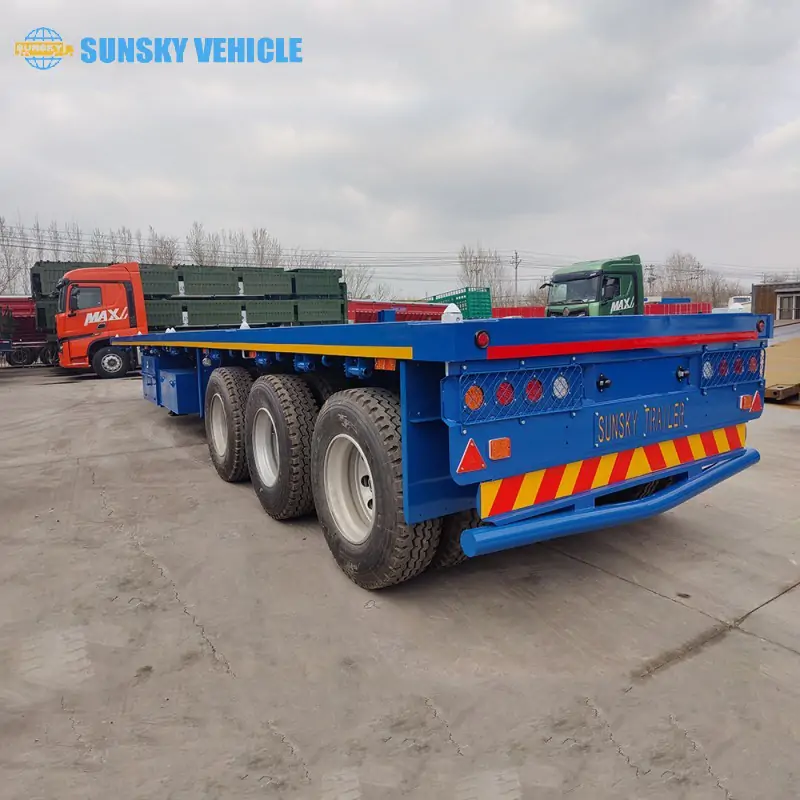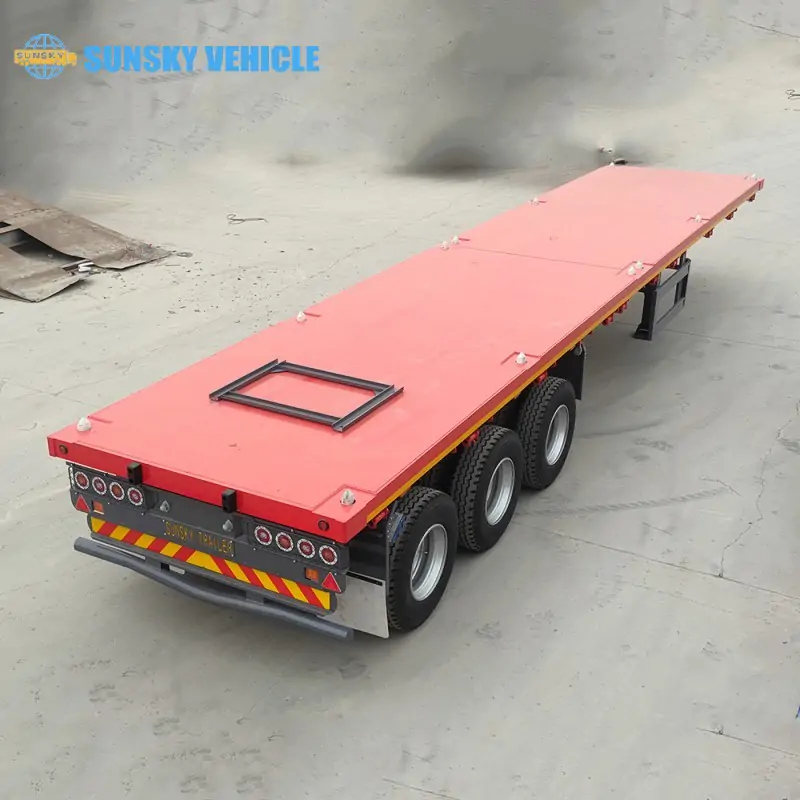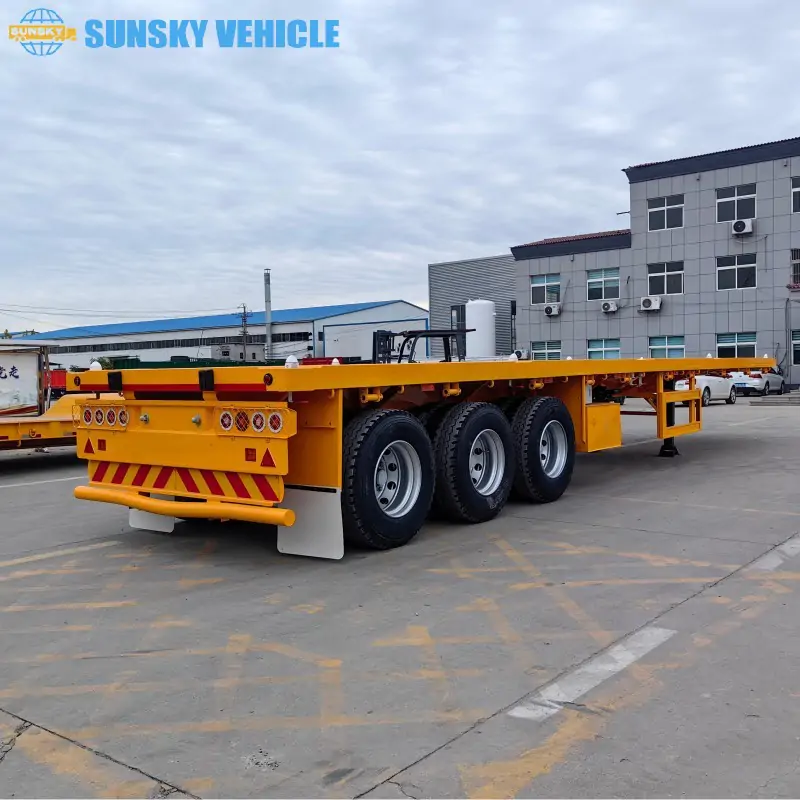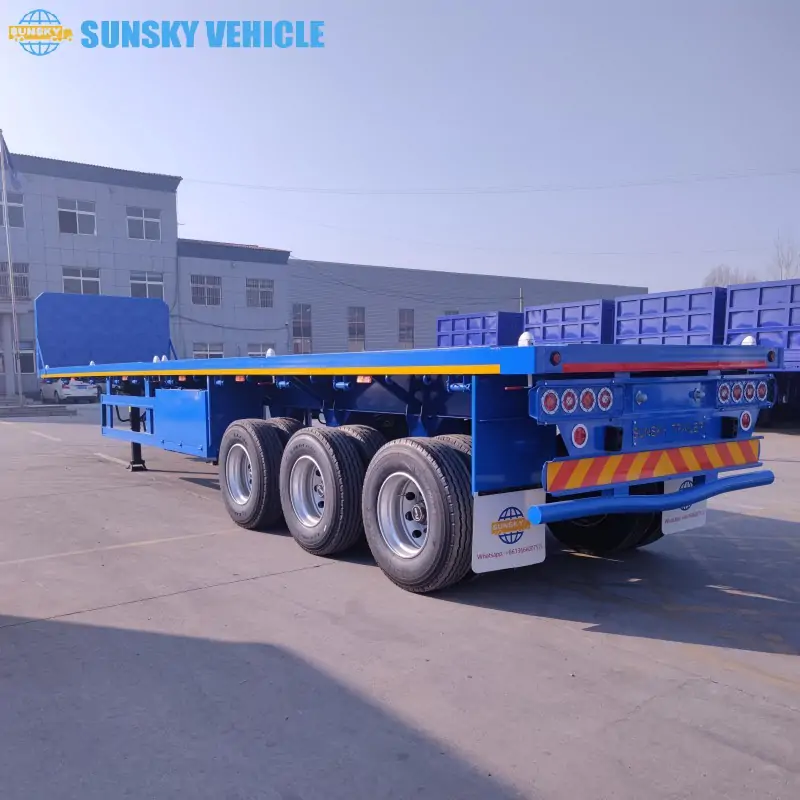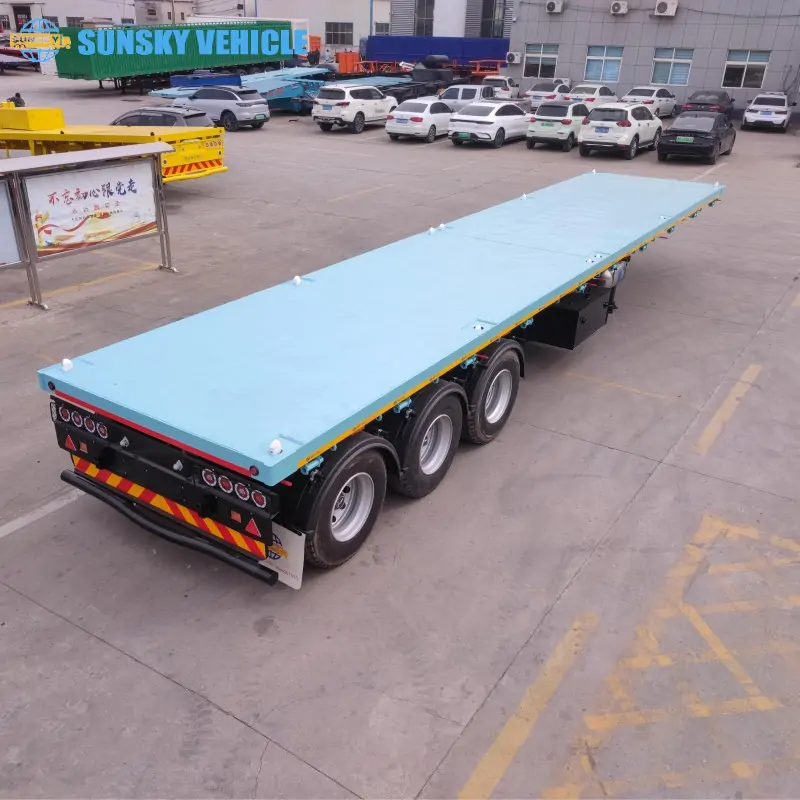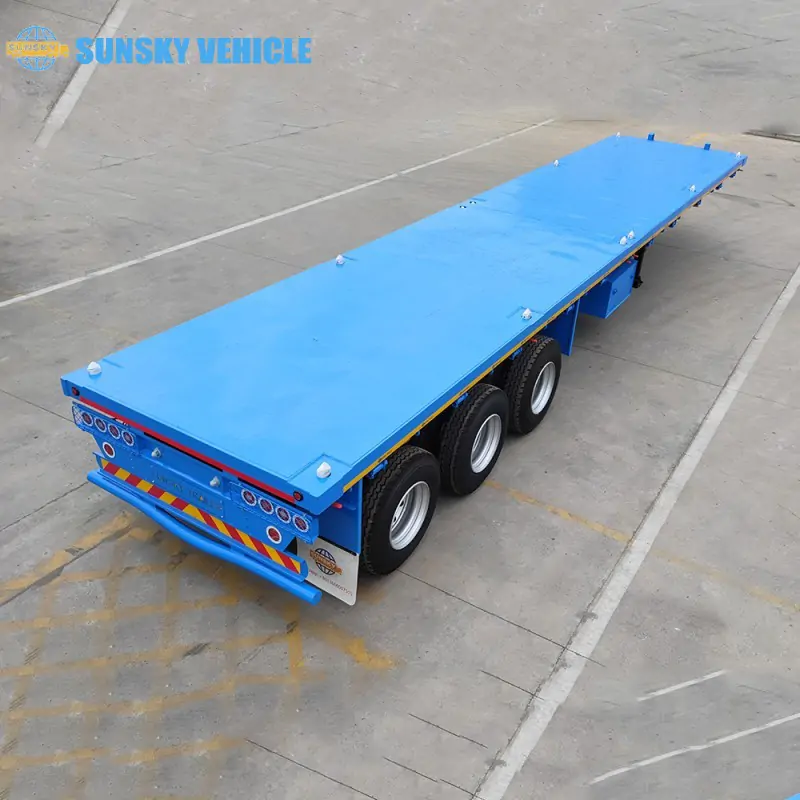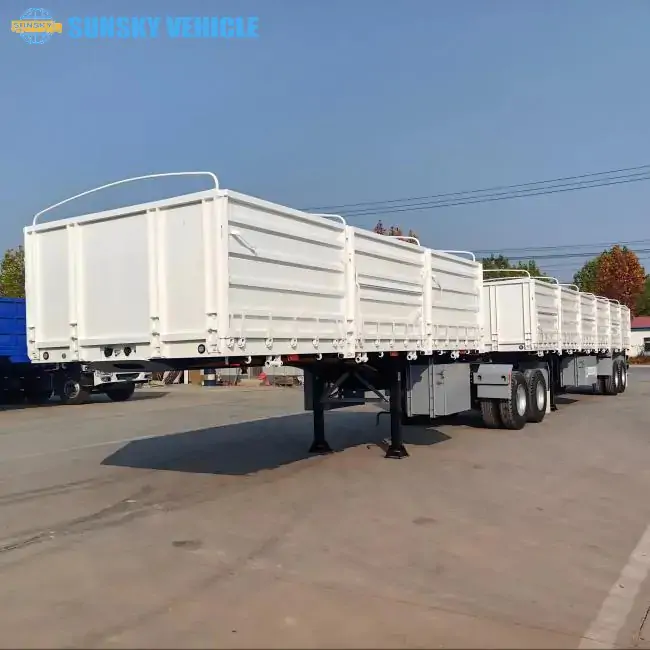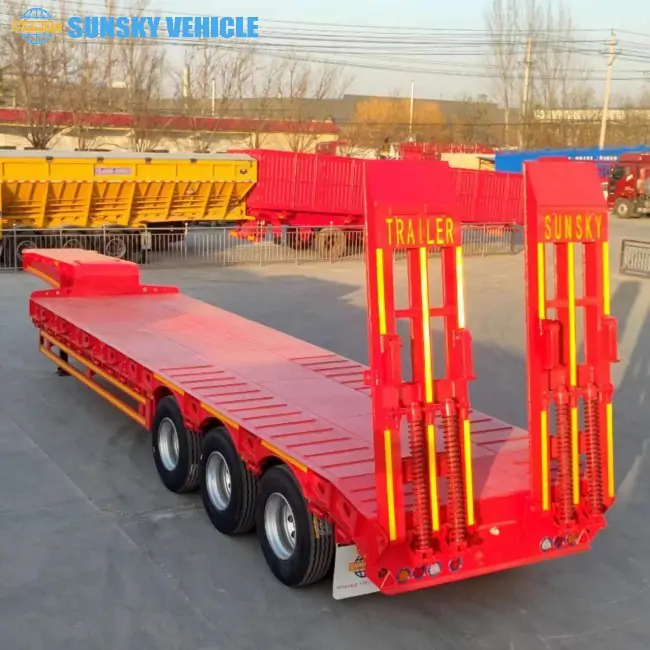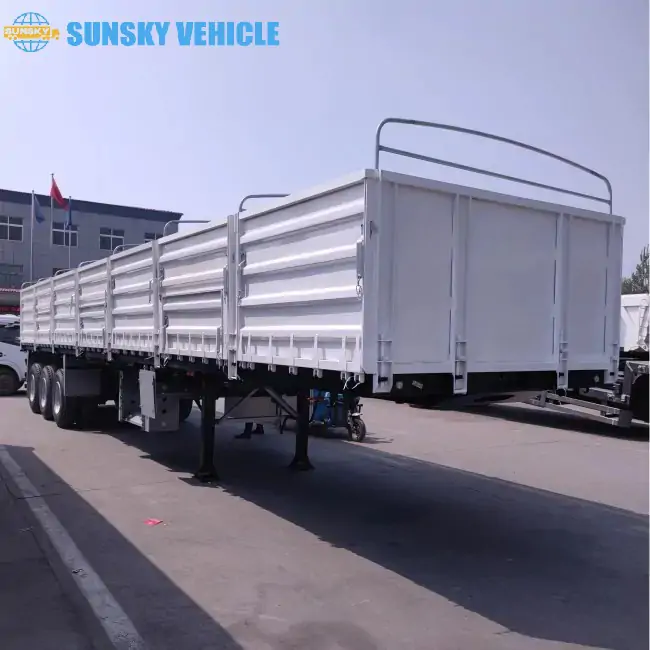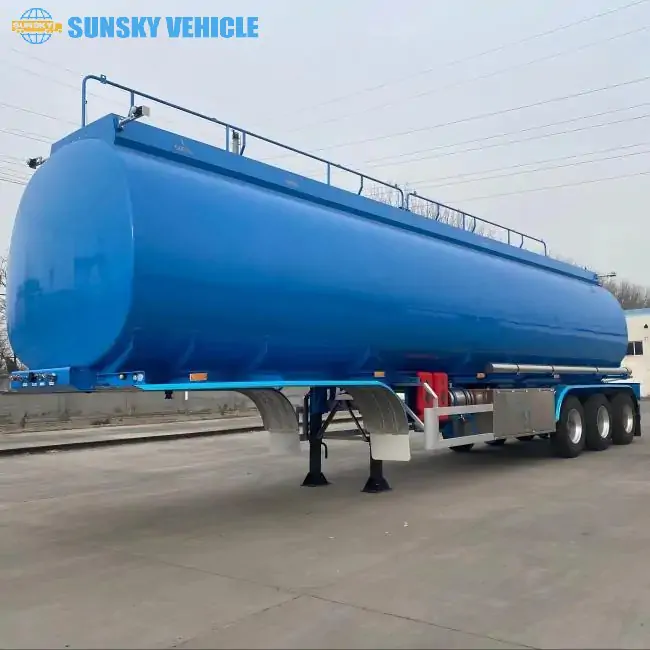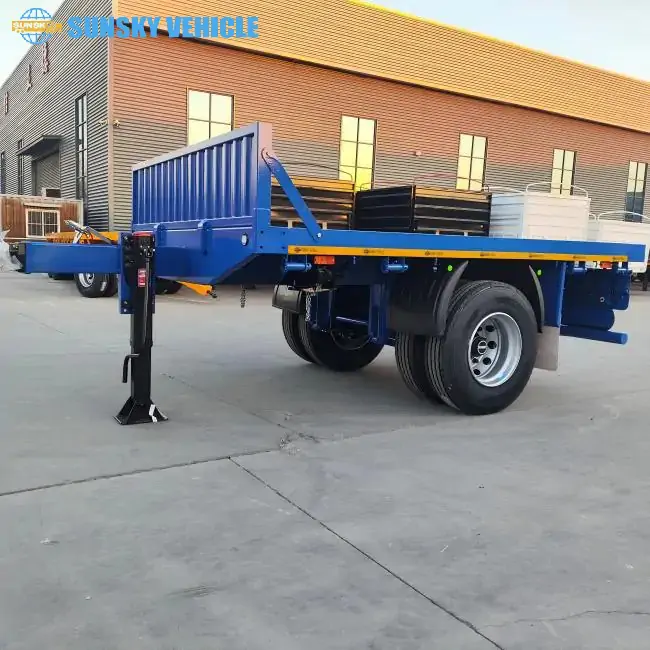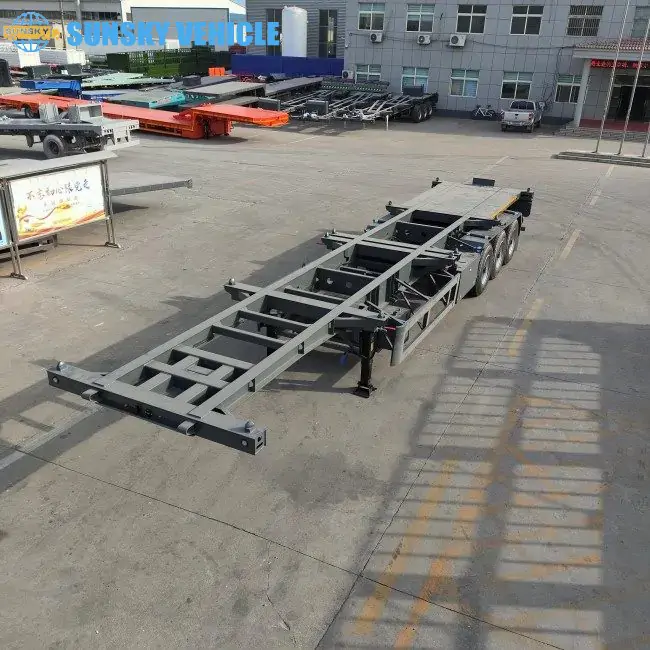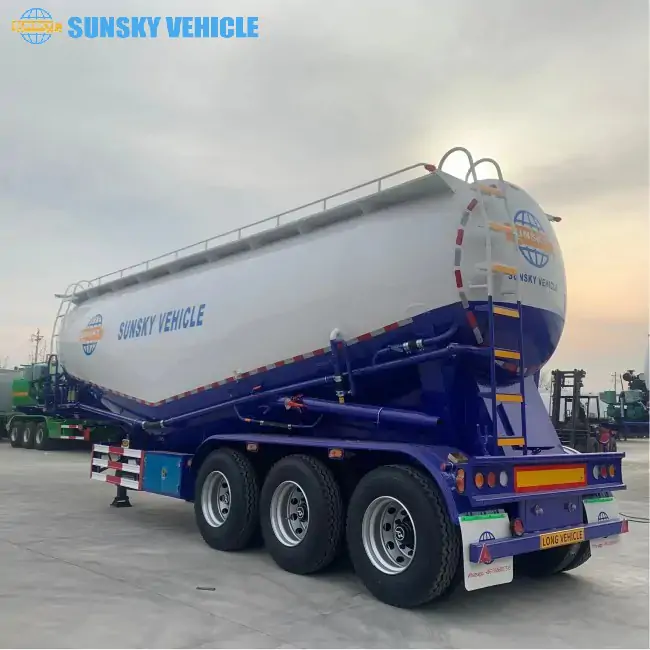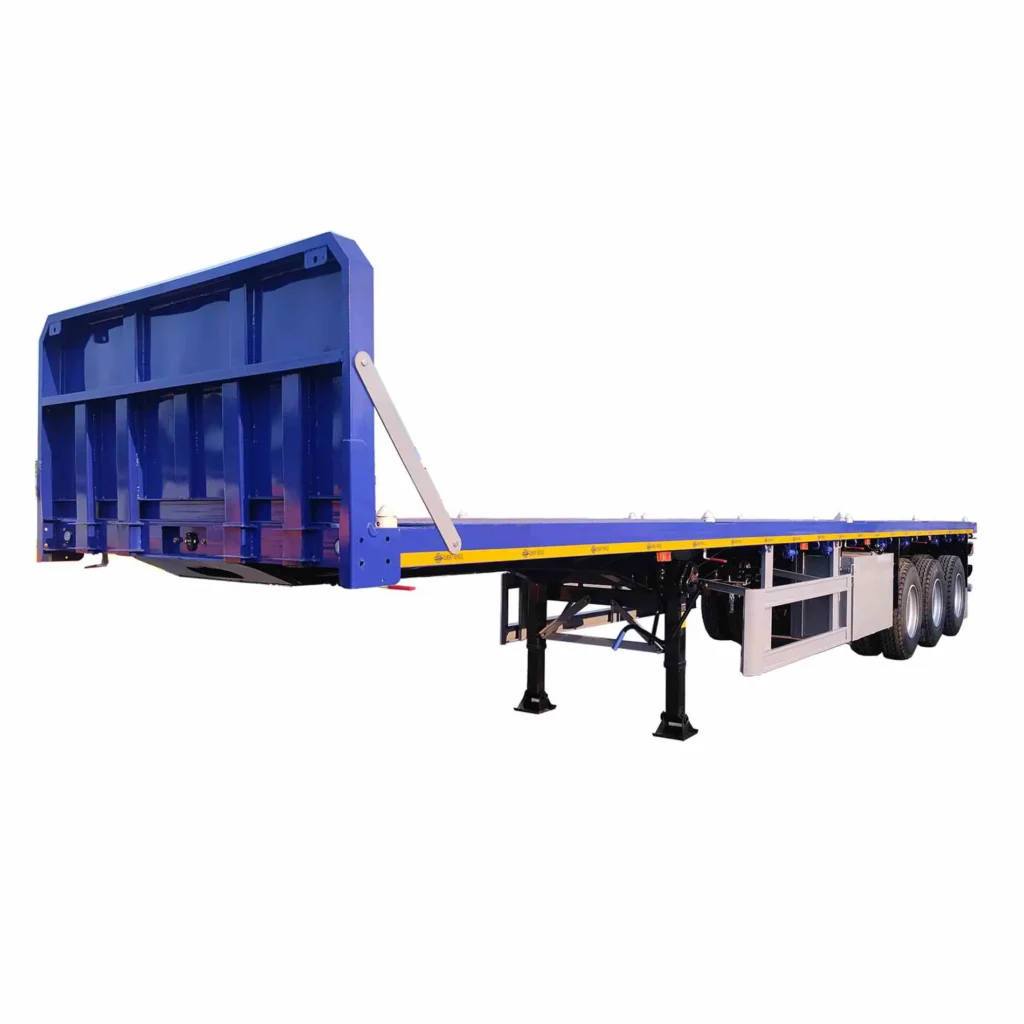
flatbed trailer
Unleash your hauling power with our robust flatbed trailers. Engineered from premium, high-tensile steel, they provide the open platform and strength needed for any challenging load.
What is flatbed trailer?
A flatbed trailer is a versatile and essential type of semi-trailer characterized by its completely flat, open deck with no sides, roof, or ends. This simple yet robust design makes it incredibly adaptable for transporting a vast array of cargo that might be too large, irregularly shaped, or cumbersome for enclosed trailers. Constructed typically from high-strength steel or aluminum, flatbeds are directly connected to a tractor head via a kingpin, forming a powerful combination for overland freight. They are the workhorses for industries requiring flexible loading and unloading solutions, relying heavily on proper securement to safely transport goods.
flatbed deck trailer application scenarios
Flatbed trailers are the ultimate flexible hauling solution, making them indispensable across numerous industries and diverse transport challenges

Intermodal Transportation/Container Haulage: This is the most common and primary use. Skeleton trailers are the backbone of intermodal logistics, connecting different modes of transport (ship, rail, road).
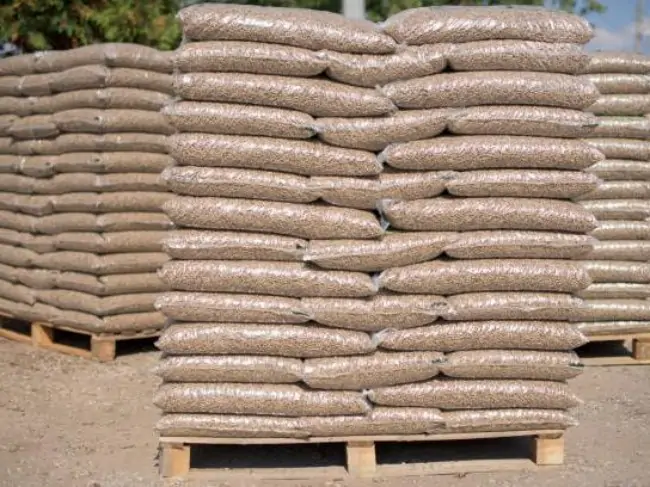
Bulk Cargo: Capable of carrying palletized bricks, bagged cement, or even certain bulk materials like logs (with specialized bunks) when properly secured.
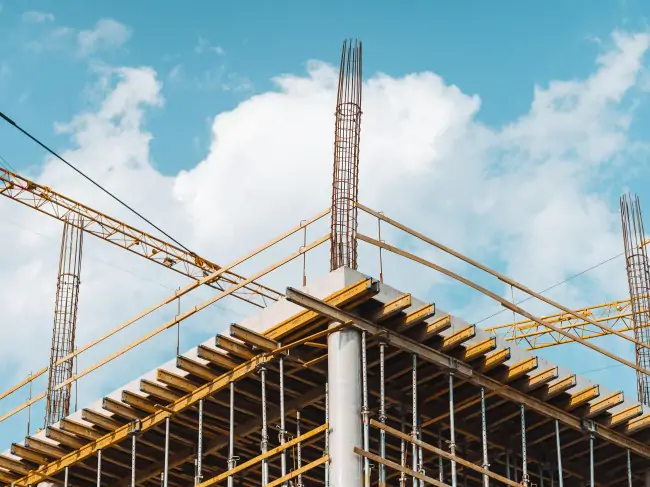
Construction Industry: Ideal for transporting oversized building materials like steel beams, prefabricated concrete slabs, lumber, scaffolding, rebar, and pipes directly to job sites.
Standard configuration
-
SUNSKY axle
-
12R22.5 Tires
-
LED light system
-
standard 20/40 feet
-
surface paint process
-
Leaf spring suspension
-
12-lock mid-container design
Customizable options
-
water tank
-
plastic bracket
-
Auxiliary fuel tank
-
Number of locks: 4/8/12
-
standard style/gooseneck style
-
Rear tailgate container door baffle
-
BPW/Triangle/FUWA axles as needed
Looking for some new designs ?
40ft flatbed trailer detail design
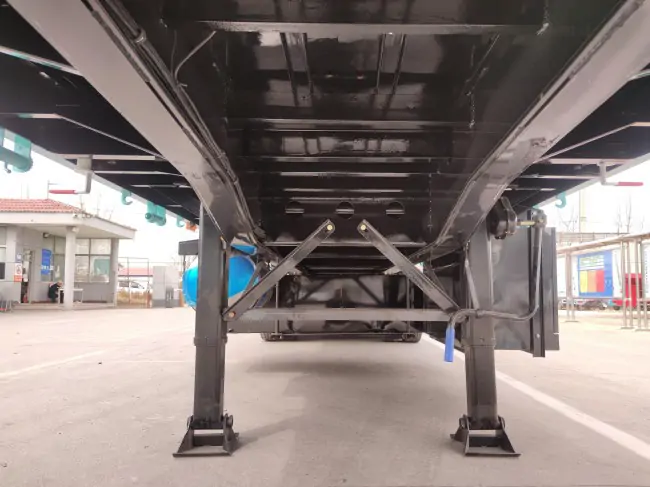
High-Strength Main Beams: The core of a flatbed trailer’s durability lies in its robust main beams, typically I-beams made from high-tensile steel. These are engineered to withstand immense downward pressure and torsional forces from heavy, concentrated loads, ensuring structural integrity and stability during transit.
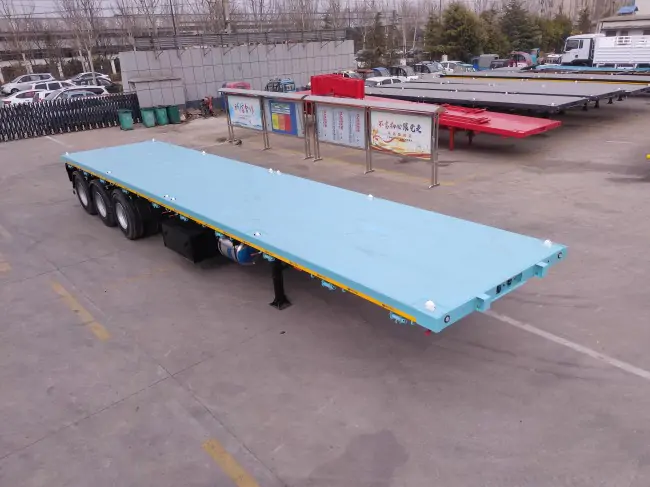
Durable Decking Material: The flat platform is commonly constructed from aluminum, designed for exceptional wear resistance and grip. Platform pattern design increases friction. This provides a sturdy, non-slip surface that can endure repeated loading and unloading cycles of diverse and heavy cargo.
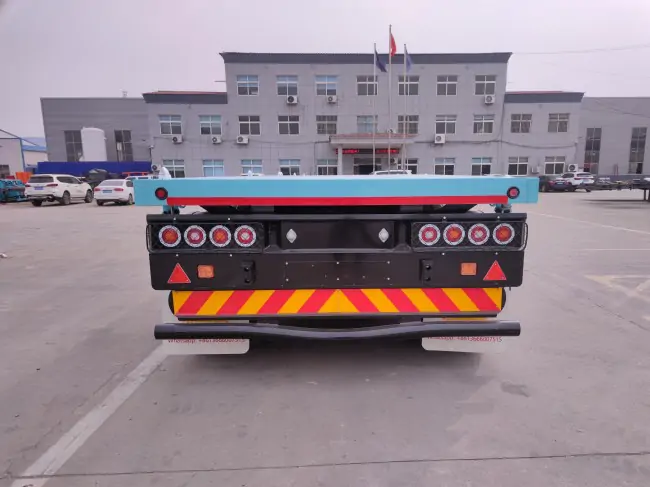
Lighting system, tail lamp shade–Prevent damage to the lights from foreign objects such as gravel.
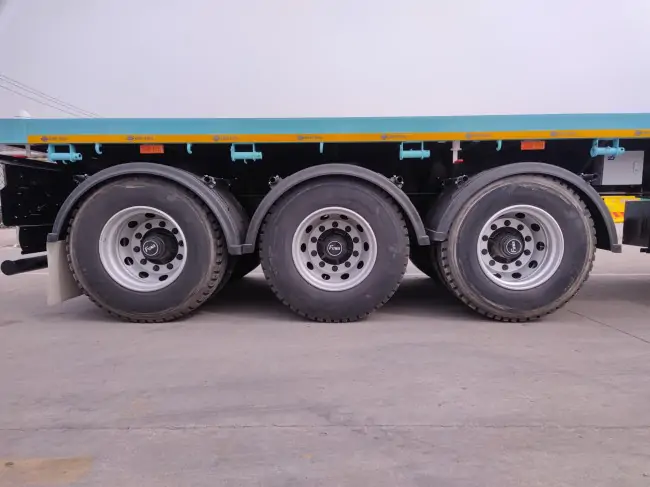
Advanced Axle and Suspension Systems: Flatbed trailers are equipped with three axles and a robust suspension system (air suspension or spring suspension) designed to evenly distribute the load. This enhances stability, reduces road shock to the cargo, extends tire life, and ensures compliance with strict axle weight regulations.
Video of semi flatbed trailer
Flatbed Trailer with Henred-type axles and suspension
3-axle flatbed Trailer with Piles
40FT flatbed Container Trailer
flatbed traiiler with dangler trailer
The trailer type you are looking for is not found
FAQ
What types of cargo are flatbed trailers best suited for transporting?
Flatbed trailers are ideally suited for transporting cargo that is bulky, oversized, unusually shaped, or requires loading from the top or sides. This includes a wide range of materials such as construction equipment (excavators, forklifts), large machinery parts, building materials (steel beams, lumber, pipes), industrial components, pre-fabricated structures, and securely bundled bulk items. Their open design offers unmatched flexibility for loading and unloading.
How is cargo safely secured on a flatbed semi-trailer to prevent shifting?
Cargo is safely secured on a flatbed semi-trailer using various methods to prevent shifting, sliding, or tipping during transit. This primarily involves robust tie-down equipment such as heavy-duty straps, chains, binders, and dunnage (wood blocks or bracing). Loads must be properly distributed and balanced on the deck. Strategic use of rub rails, stake pockets, and D-rings provides anchor points, ensuring all cargo is tightly secured according to DOT regulations and industry best practices.
What are the advantages of using a flat deck trailer compared to an enclosed van trailer?
The primary advantages of using a flatbed trailer over an enclosed van trailer are unparalleled versatility and accessibility for large or irregular cargo. Flatbeds allow for loading and unloading from any angle (top, side, or rear) using cranes, forklifts, or other equipment, which is impossible with a van. This makes them ideal for oversized machinery, construction materials, and any freight that doesn’t require protection from weather or security against theft that a closed box provides.
Are there different types or configurations of flatbed trailers available?
Yes, flatbed trailers come in several configurations to suit specific hauling needs. The most common is the standard flatbed, but variations exist. These include drop-deck (or step-deck) trailers, which have a lower deck height to accommodate taller cargo, and removable gooseneck (RGN) trailers, which allow the front of the trailer to detach and form a ramp for easy loading of heavy, self-propelled equipment. Some flatbeds also feature extendable capabilities for extremely long loads.
What are the weight and dimension limitations for flatbed trailer transport?
Weight and dimension limitations for flatbed trailer transport vary significantly by region and specific road regulations (e.g., state laws in the US). Generally, standard flatbeds adhere to legal weight limits (e.g., 80,000 lbs. gross vehicle weight) and dimensions (e.g., 53 feet long, 8.5 feet wide, and 13.5 feet high for cargo). For oversized or over-dimensional loads, special permits, routing, and sometimes escorts are required, with regulations dependent on the degree to which the cargo exceeds standard limits.
How does regular maintenance impact the longevity and safety of a 40ft flatbed trailer?
Regular maintenance is crucial for the longevity and safety of a flatbed trailer. This includes routine inspections of the frame for cracks or fatigue, checking the integrity of the decking, and ensuring all tie-down points (D-rings, winches, stake pockets) are secure and undamaged. Tire pressure and wear, brake system functionality, and the condition of lights and reflective tape are vital for road safety. Consistent lubrication of moving parts and addressing minor issues promptly prevent major failures, extending the trailer’s service life.
Connect with us
Ready to partner? We’re convinced Sunsky Vehicle is your best choice! Reach out through the form or by phone.

*Our team will answer your inquiries within 24 hours.
*Your information will be kept strictly confidential.
Our Latest News
Sorry, we couldn't find any posts. Please try a different search.
Contact Info
-
+86 13666007515
-
sunskyvehicle@gmail.com
-
No.99 Xiangyu Road, Xiamen Free Trade Zone,HULI DISTRICT, XIAMEN,CHINA Factory address: Liangshan district, Jining city, Shandong, China
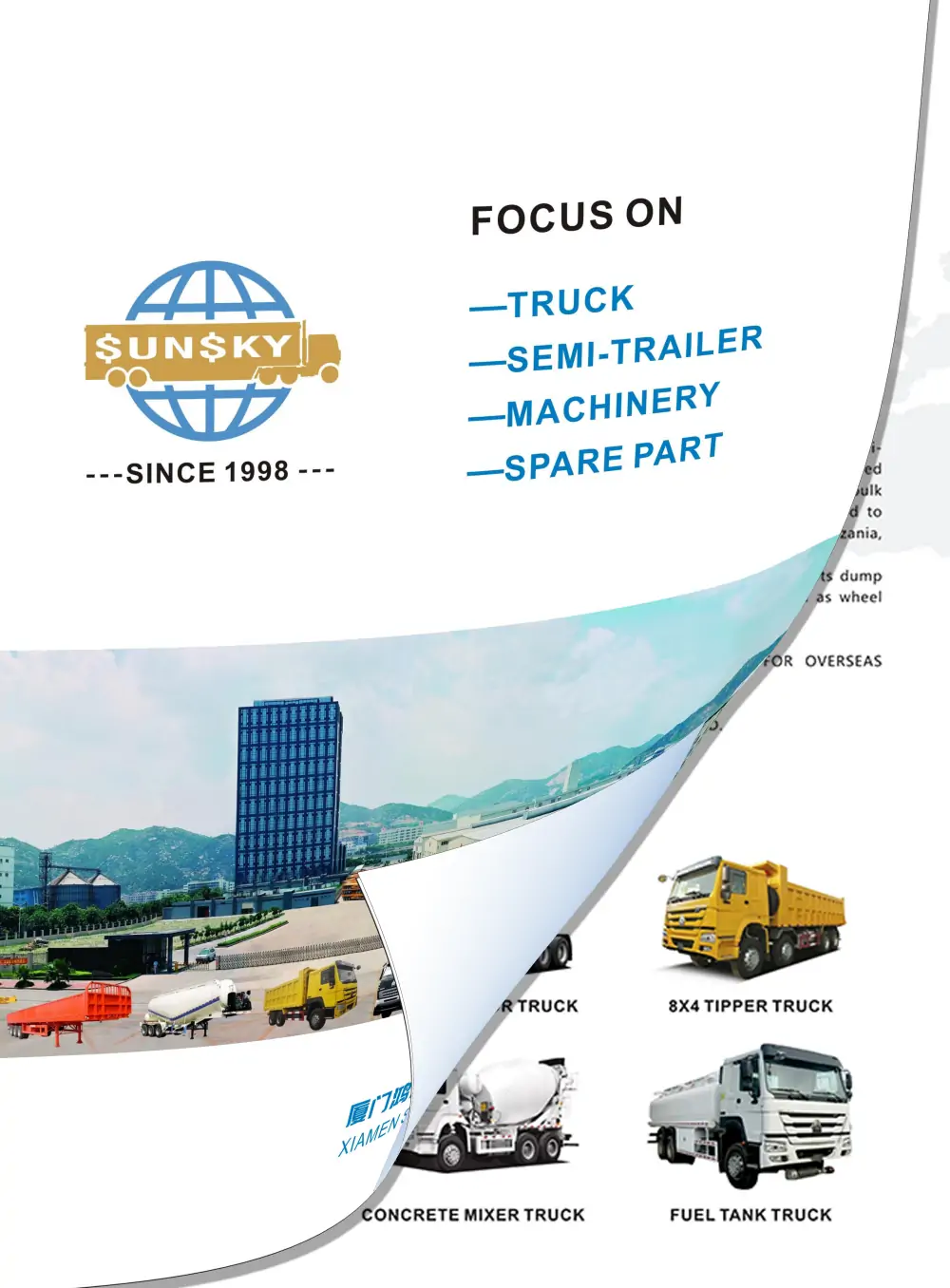
Copyright © 2020 Xiamen Sunsky Vehicle Co.,Ltd..All Rights Rese Co.,Ltd..All Rights Reserved.
Get A Quote
The more details you provide, the faster we can quote.
*Our team will answer your inquiries within 12 hours.
*Your information will be kept strictly confidential.

